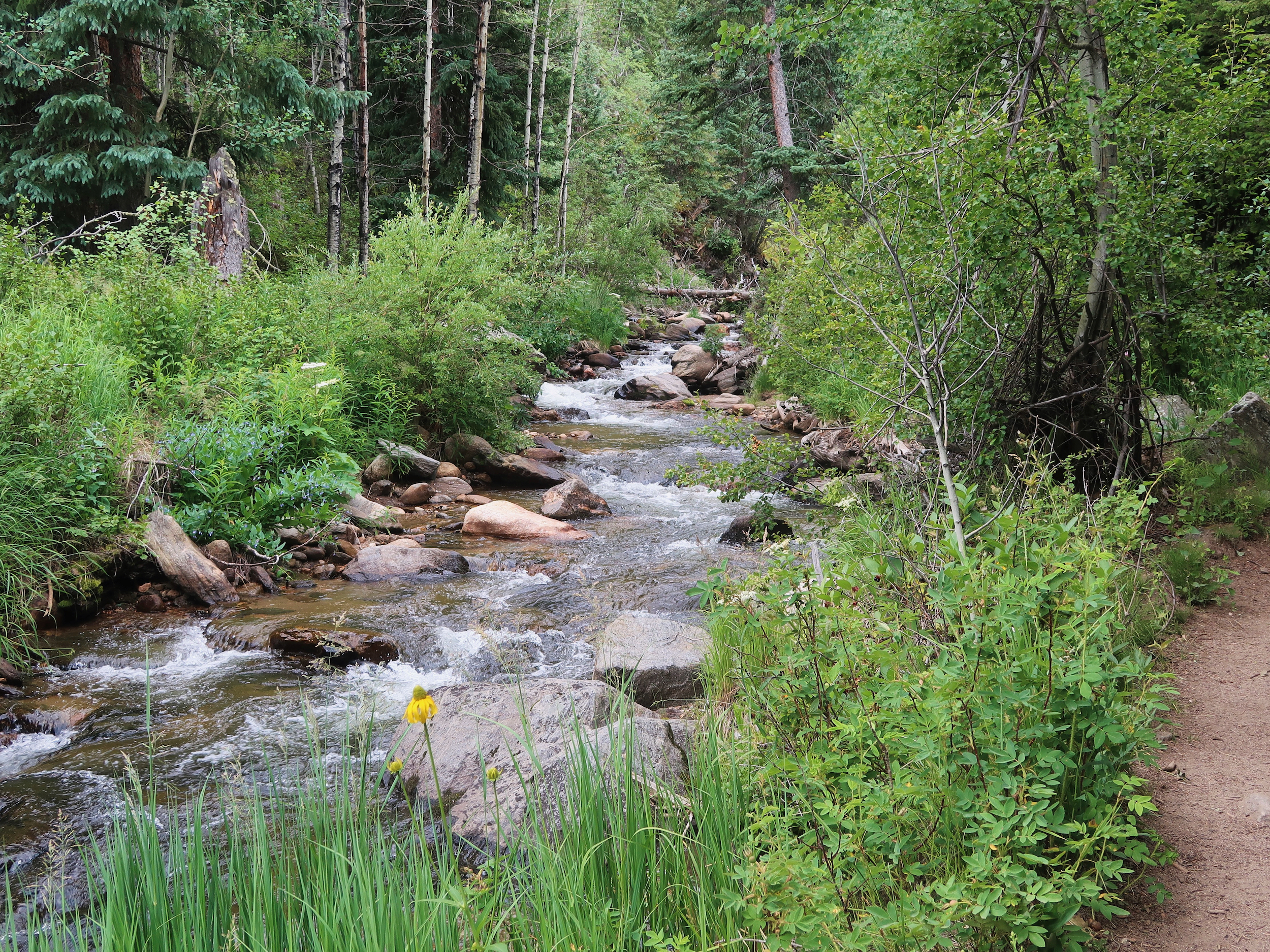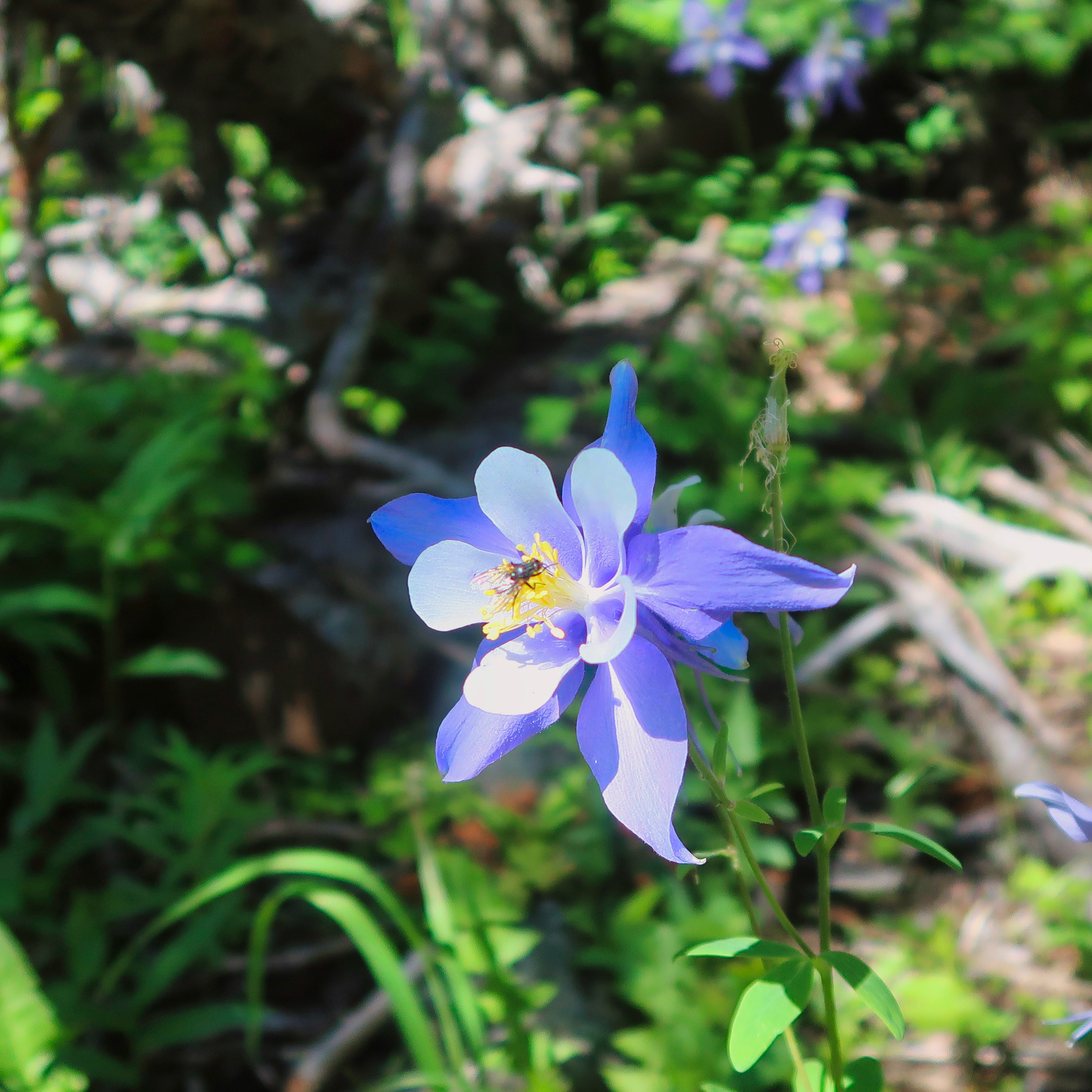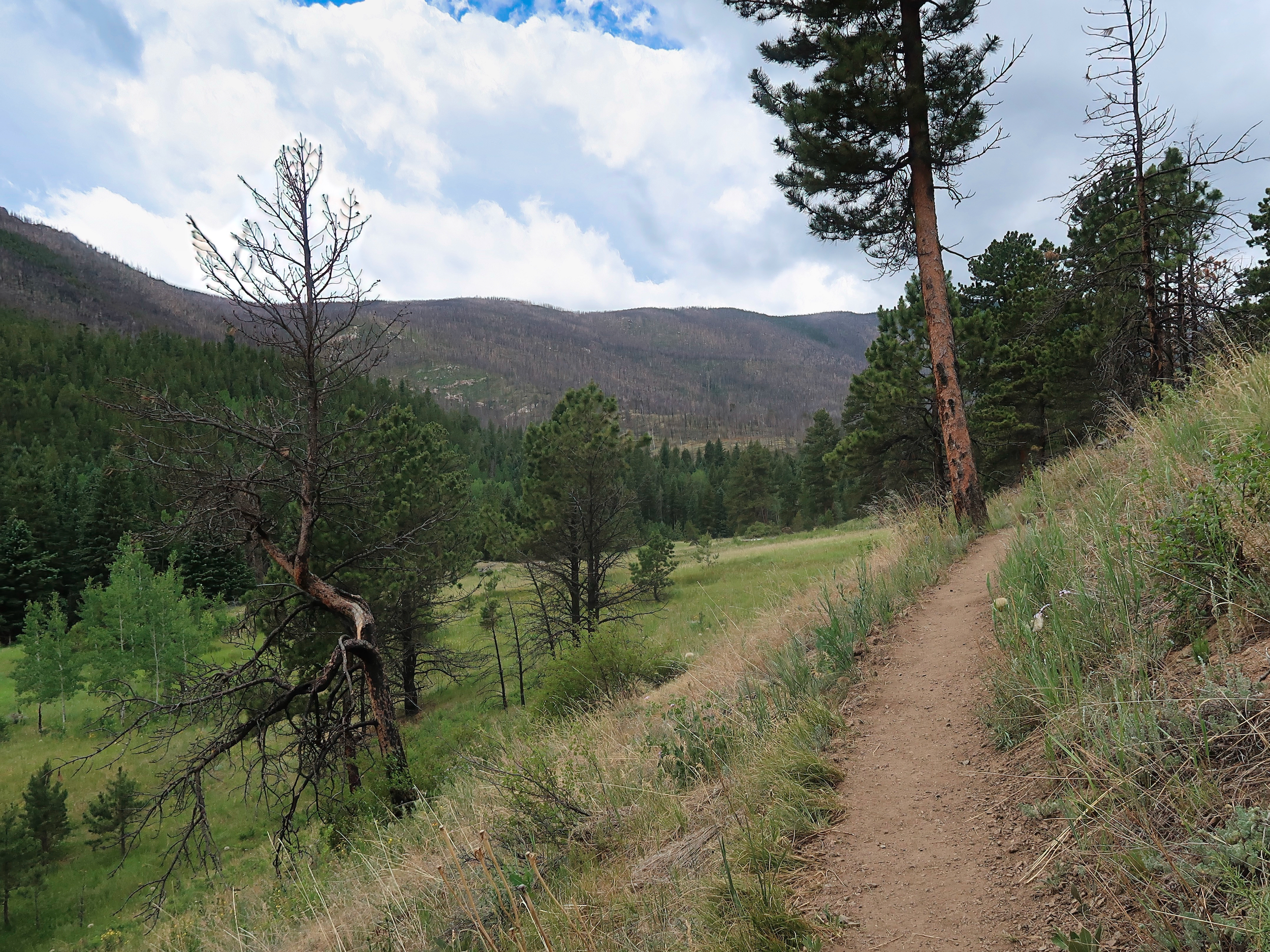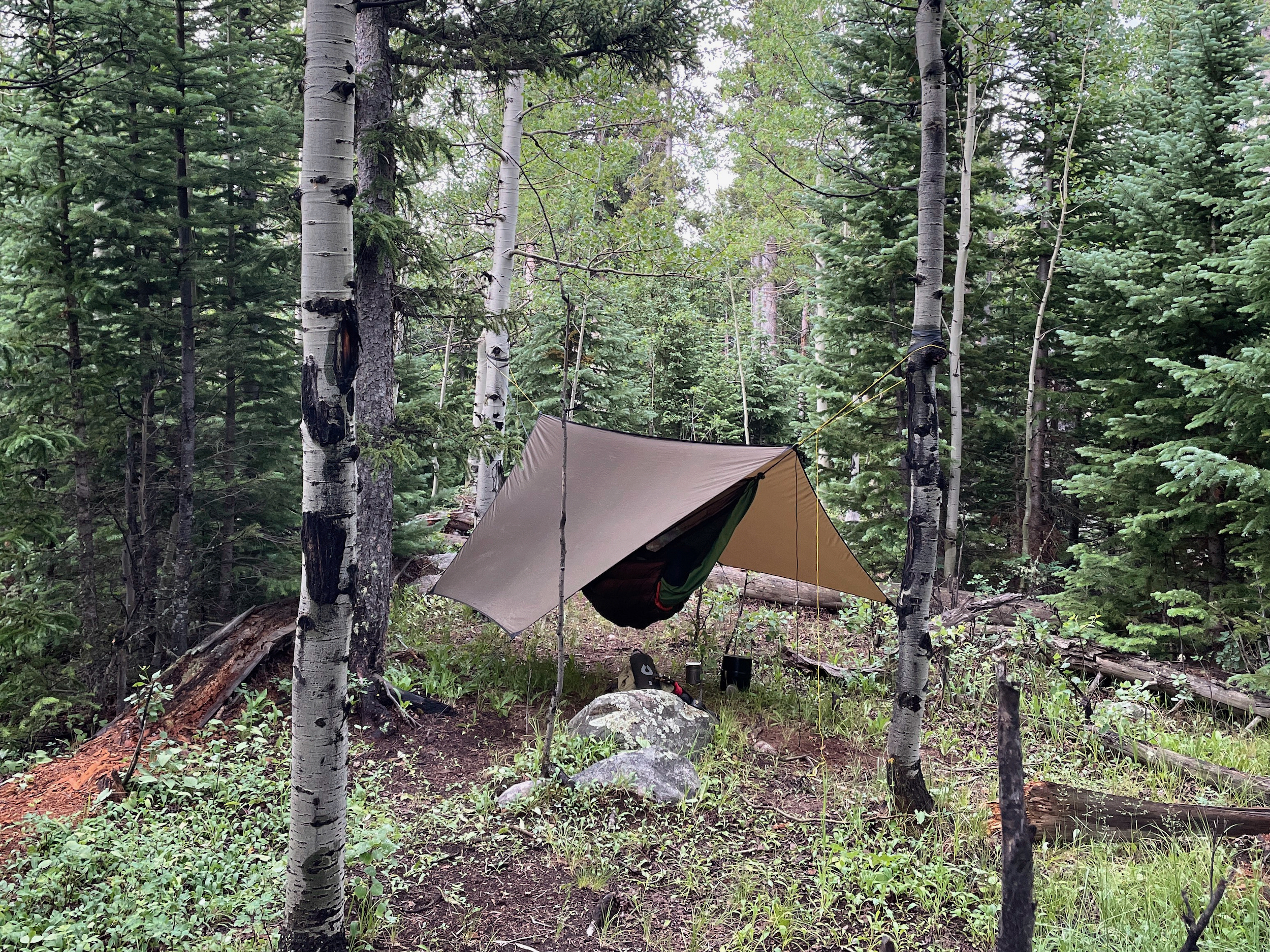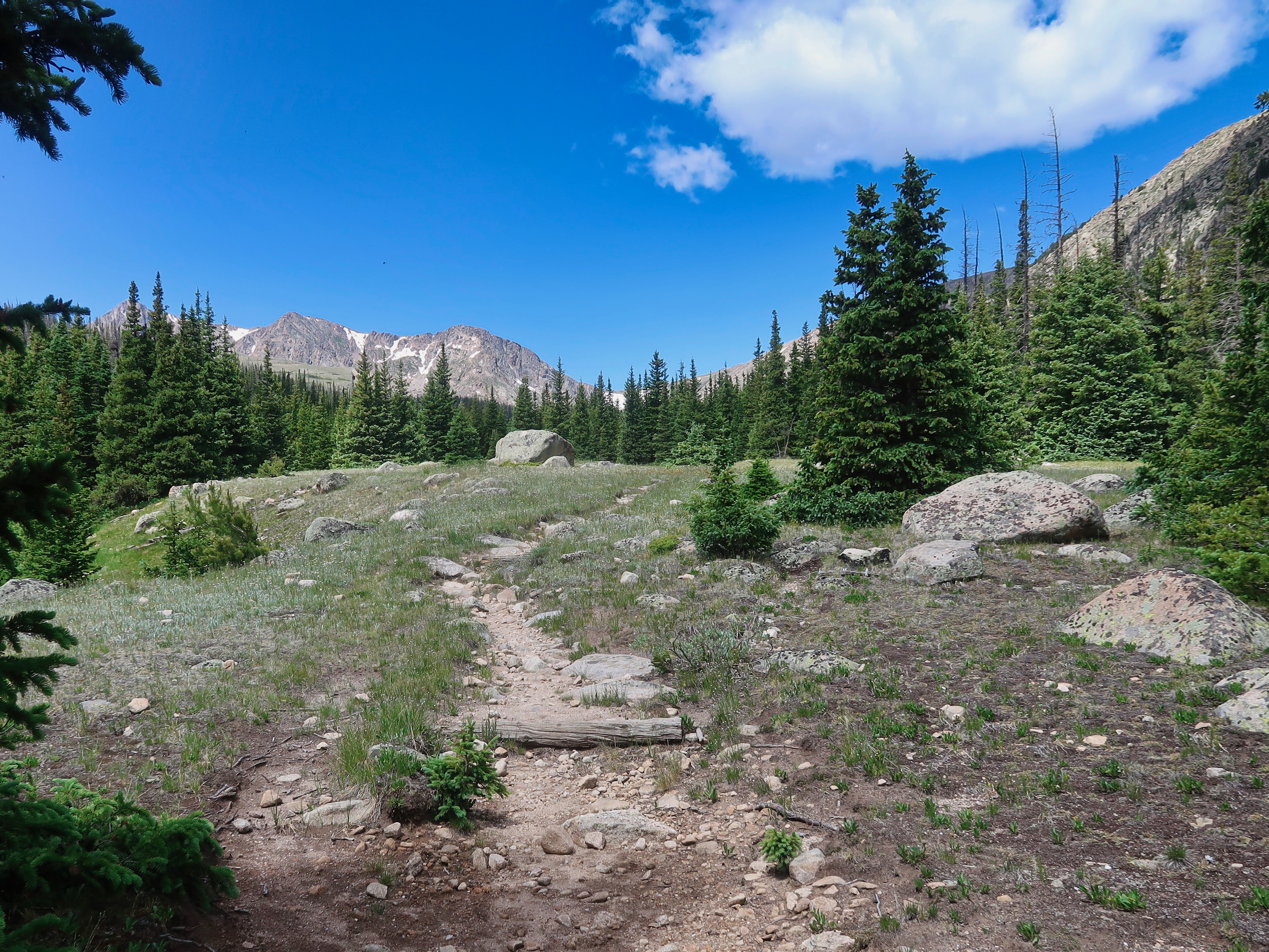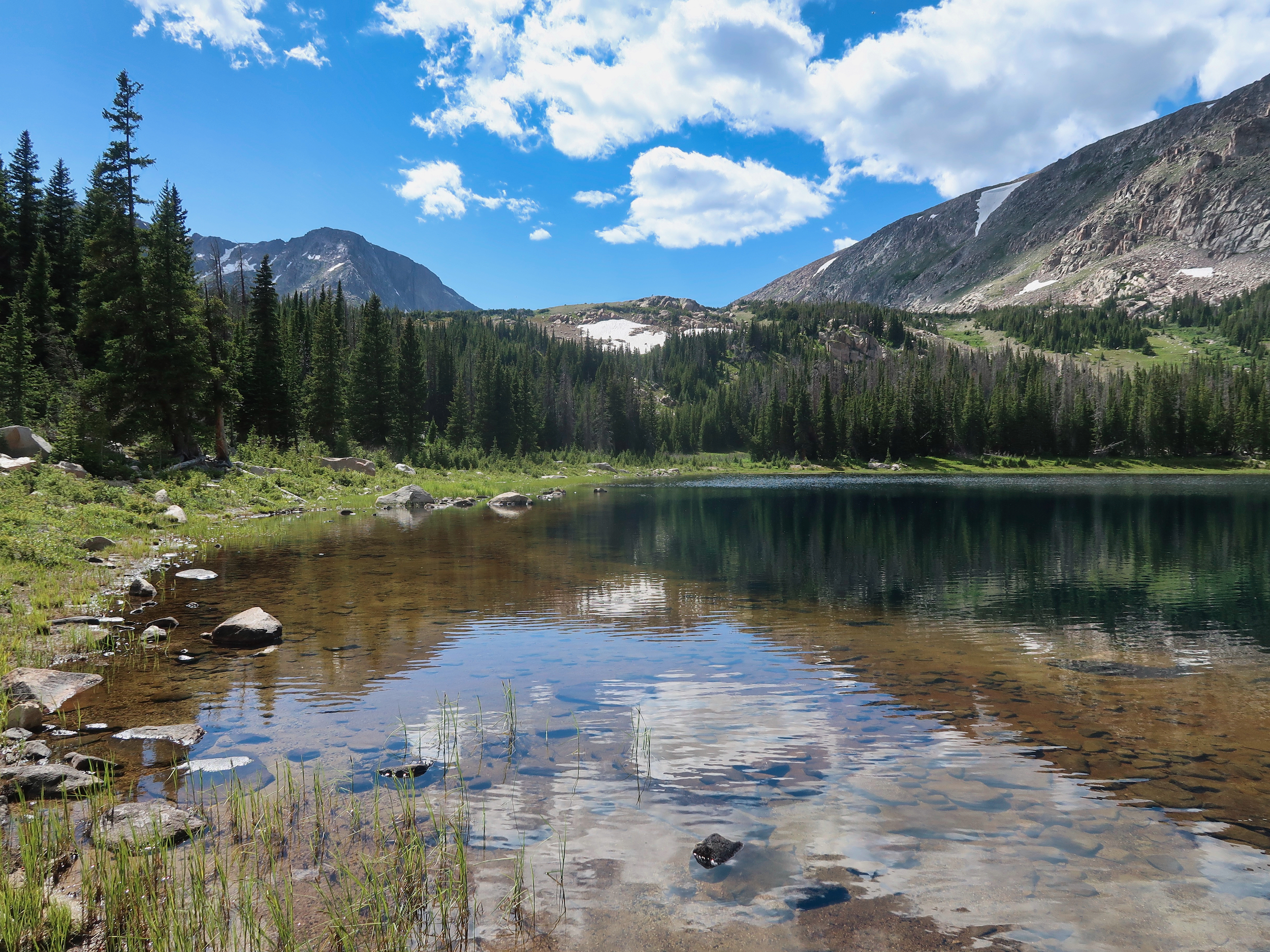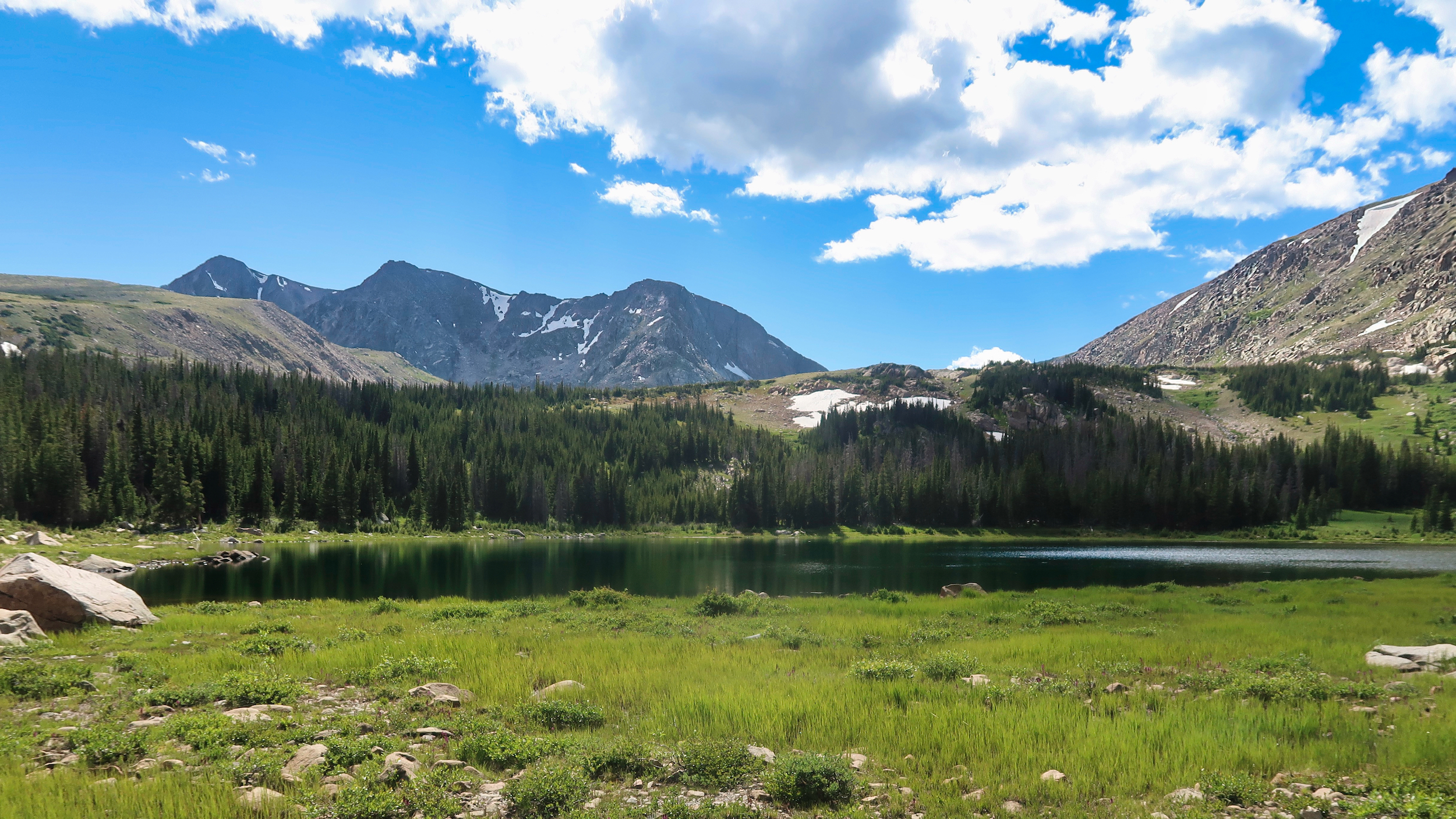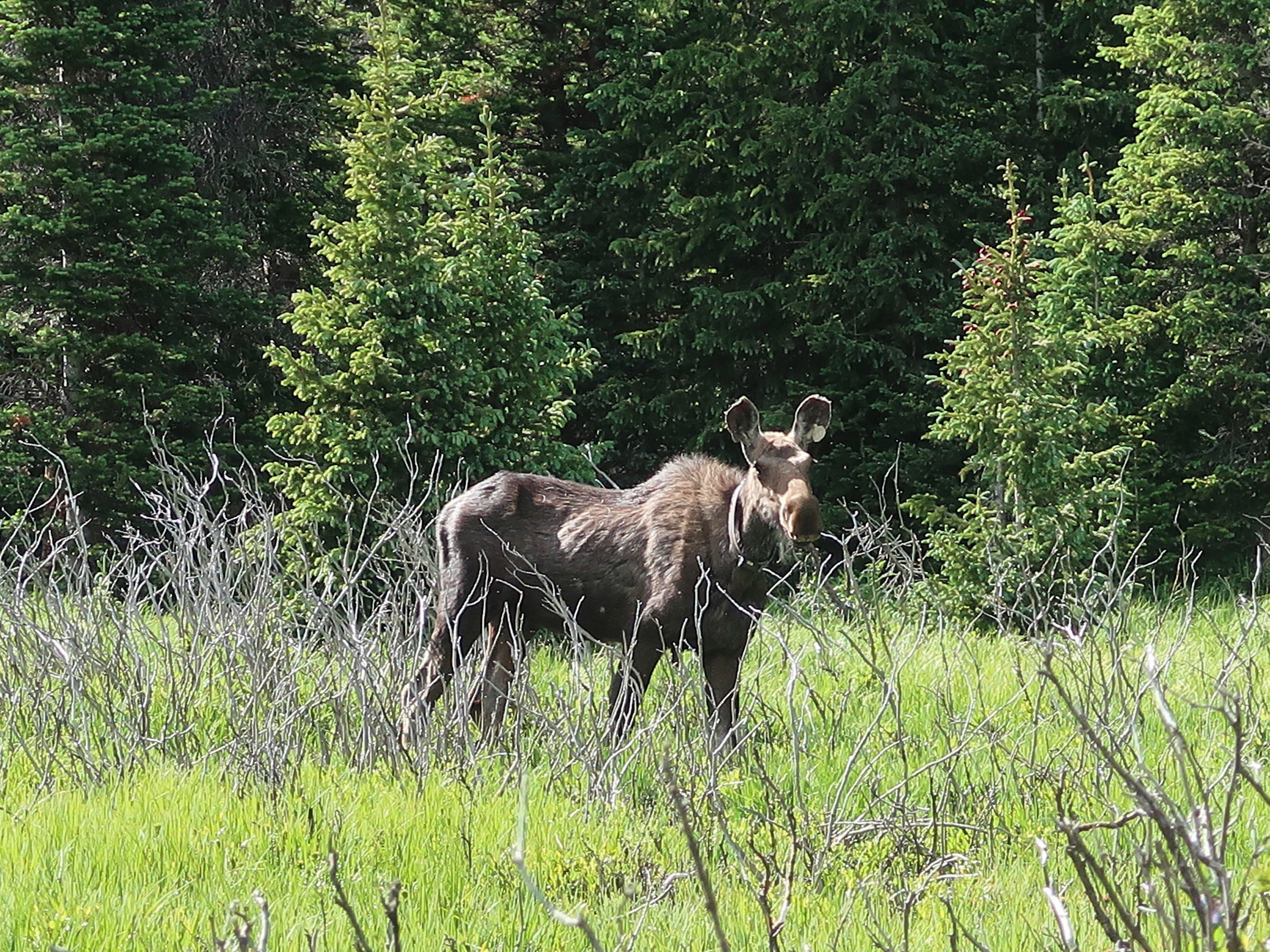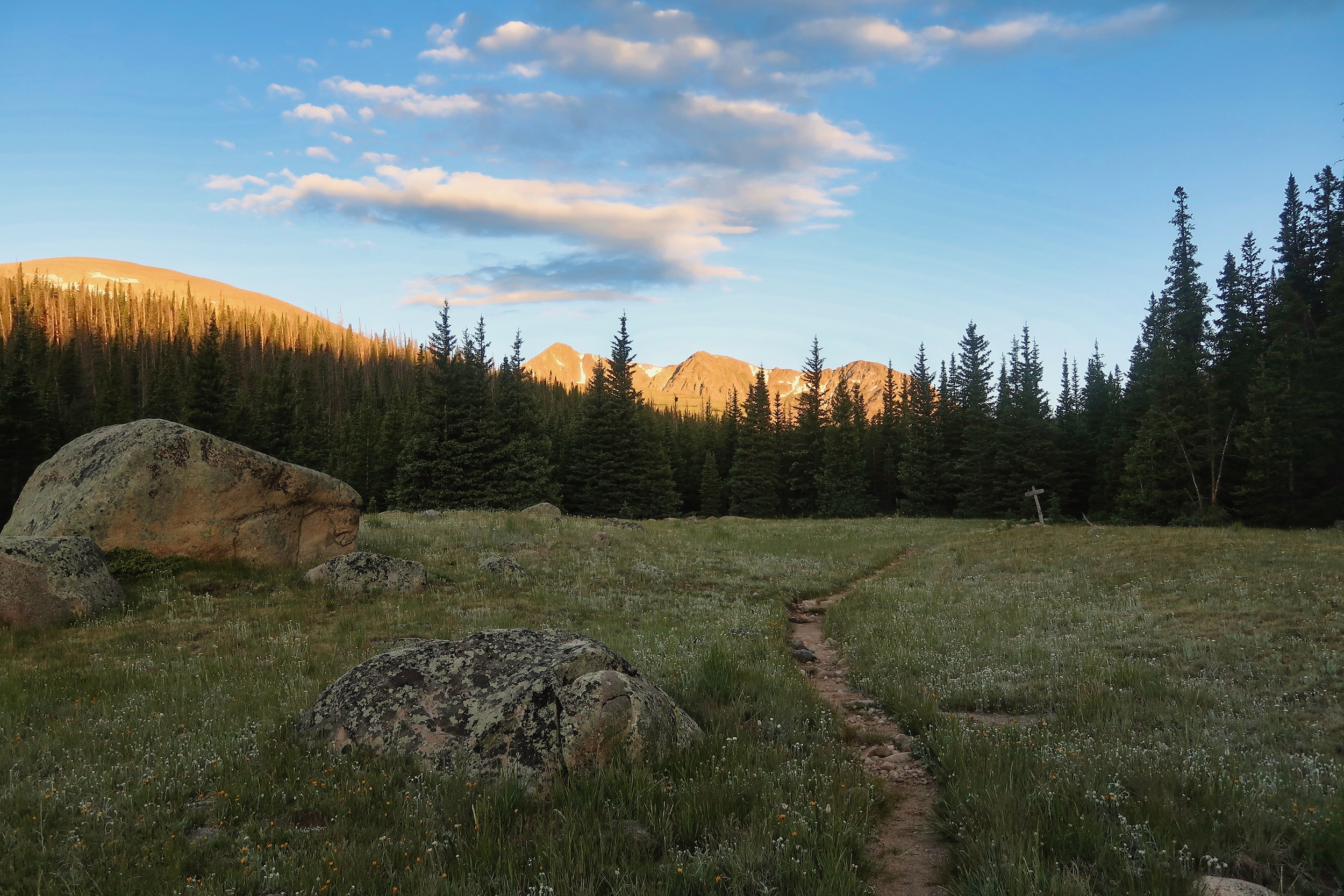I was planning to do another short trip, this time to Woodland Reservoir in the Indian Peaks Wilderness. But the forecast was not great, with snow predicted at higher altitudes (Woodland is at 10,800 feet).
A check of recreation.gov showed RMNP backcountry permits available for walk-ups at sites along the North Fork of the Big Thompson River – the north boundary area, comprising the northeast corner of the park.
When I walked up to the backcountry office desk, sites were still available. I got one for Boundary Creek, just inside the Park border, and one for a second night at Lost Meadows, a few miles further in and not far from Lost Lake. I’d be camping at 9100 feet at Boundary Creek which would be well below any snow line.
I drove to the trailhead and started hiking under cloudy skies. At 7800 feet, it is one of the lower-elevation wilderness trailheads along the Front Range. The foliage was accordingly lush, and the columbines were present in particular abundance.
This area was touched by the Cameron Pass Fire of 2022. Not heavily, but there was some walking through the burn.
The burn was less catastrophic than some I have seen, especially along the PCT. Although the trees were killed, the soil was not sterilized, and there was a healthy regrowth of grasses, flowers and aspen saplings.
I got to the Boundary Creek campsite, just inside the park boundary, as it was beginning to rain. This provided me with an opportunity to practice setting up my new hammock in the rain, a vital hammocking skill.
It went fairly smoothly. Obviously, you pitch the tarp first, then hang the hammock underneath. The main difficulty is getting the hammock and tarp aligned while getting the hang you want on the hammock. You want the foot of the hammock (it is an asymmetric hammock) to be a few inches higher than the head, which means tightening the whoopie sling at the foot end and moving the hammock toward the foot. Which brought the foot too close to the edge of the tarp, which meant repositioning the tarp. It took a couple of rounds of fiddling to get this just right, and I had to put on my poncho to keep dry. But I did end up with a dry and comfortable shelter.
There was cold heavy rain (but no snow!) through much of the evening and night but the tarp and hammock setup kept me dry, warm and comfortable. The cold caused considerable condensation on the inside of the tarp, and I had to crouch low when moving around under it to avoid getting wet. I’ll remember to pitch it higher next time.
The morning was clear and I packed up for the walk to the Lost Meadows site, about 3 miles and 1200 feet higher. The climb afforded me some views of the high country.
I set up camp, then day hiked a mile and a half or so up to Lost Lake, which was very placid and calm, nestled in its basin.
The fish were feeding at a leisurely pace, so I strung up my Tenkara rod and proceeded to catch a couple of greenback cutthroats of good size. But the second one swallowed the hook and I couldn’t get it out which made me feel guilty and so I stopped fishing and just poked around the lake for a while.
On the hike back to camp I saw a young moose. On closer inspection it looked surprisingly scrawny for this time of year when the forage is abundant. Moose can get chronic wasting disease and I suspect this poor guy is a victim.
The night was fair, and I flipped my tarp back to enjoy views of the stars.
I rose at first light and was hiking back by 6, as Cathy had a treatment scheduled at 2pm and it was 8+ miles to the trailhead. The early start gave me a chance to enjoy first light on the mountaintops, a nice farewell to the north boundary country.


